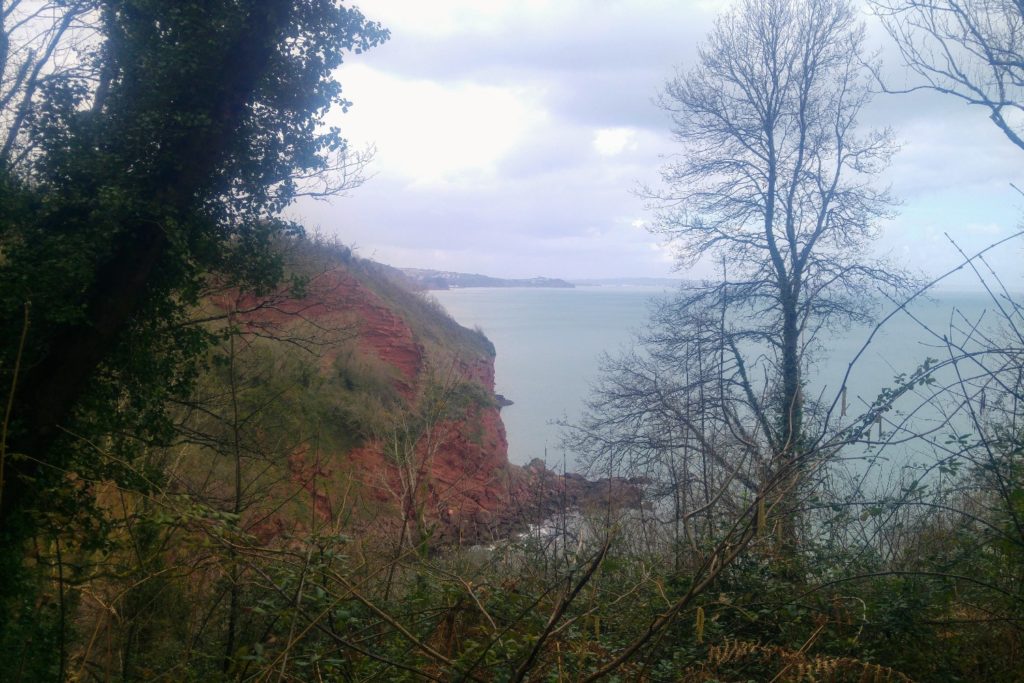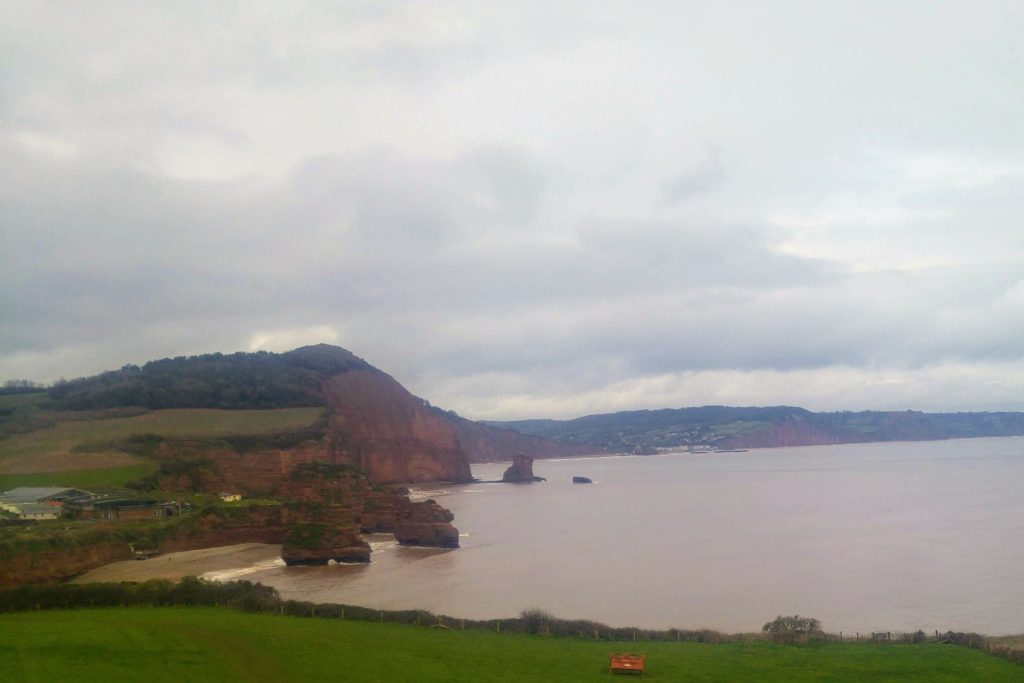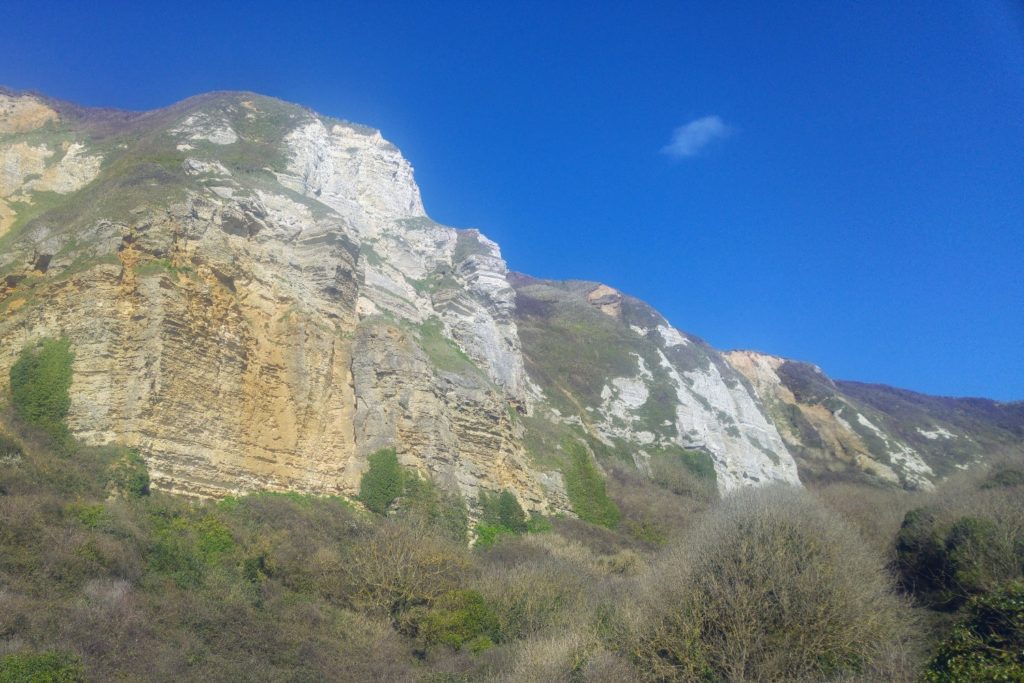
| Day | Route | Mileage | Approx time |
| 42 | Torquay to Teignmouth | 13 | 6 hours |
| 43 | Teignmouth to Exmouth | 8.1 | 4 hours |
| 44 | Exmouth to Sidmouth | 13.1 | 6 hours |
| 45 | Sidmouth to Seaton | 10.7 | 5 hours |
We set off on this journey with rumblings that the Covid virus was spreading in the UK. The Chief Medical Officer had just raised the risk from medium to high. People with medical conditions or over 70 were being asked to stay in. People with a cough or fever were told to isolate at home. On the day we returned home the Prime Minister advised people not to travel unless essential, and to avoid unnecessary contact with others. A week later the first national lockdown was announced, so we were very lucky to have fitted in this trip and to return home safely.
We arrived in Torquay in late afternoon. We walked from the train station, around the beach and harbour to the headland east of the town, to our hotel for the night. The twisting path from Torquay to Teignmouth took in some rugged scenery, open fields and woodland, with several challenging climbs. The change in the geology was striking as we were now walking on high cliffs of distinctive red sandstone. The whole landscape was red: the beaches, the rocks, the mud, even the shallow water around the beaches. The trail descended to the mouth of the Teign, where we hopped on a short ferry crossing to the other side.

Continuing through the more urban, built up areas of Teignmouth and Dawlish, there were some very easy flat stretches as the path followed alongside the famous coastal railway line (Teignmouth, Dawlish, Starcross). The tracks flanked the coast line close to the beach and occasionally disappeared into a series of tunnels cut into the cliffs.

Just beyond Exmouth, Orcombe Point marks the beginning of the 95 miles of the Jurassic Coast. The red tinged sea was swirling in the bays as we progressed on this wet, blustery day. The mud underfoot painted our boots a deep red colour as we trudged through it. The recent heavy rainfall had softened the earth, revealing worrying signs of landslips. We stopped a moment to admire the red sandstone stacks at Ladram Bay, these being formed by deposits made in the Triassic Period around 230 million years ago. It’s hard to believe that, at that time, the area was a hot, arid desert! We continued along the red cliffs, ascending a steep gradient up to High Peak, where we marvelled at the views to Sidmouth and beyond.

More challenging ascents tested us between Sidmouth and Seaton. It was impressive scenery as we reached the top of the red cliffs, with green fields inland and the trail was dotted with the bright yellow of gorse. Having taken in the spectacular panorama we descended to Weston Beach, then found ourselves climbing once again to the cliff tops. The crags suddenly turned white as the geology changed to chalk between Branscombe and Beer, with imposing rock formations and almost vertical drops onto the beach below. Hooken Cliffs is a white 400 foot high wall of chalk and limestone where in 1790 a massive landslip occurred. The area below, known as the Hooken Undercliff, is now a jumble of white pinnacles and thick vegetation of trees and plants. We walked for 2 miles through this tumbled wilderness and looked up to the majestic white cliffs above us, with the bluest of skies as a backdrop.

After Beer the short easy hop to Seaton returned us to hiking on the familiar red cliffs.
| Drive to Axminster and park near Axminster Station |
| Train Axminster to Torquay (Great Western Railway via Exeter) – 1 hour 40 minutes |
| Walk from Torquay to Seaton |
| Bus Seaton to Axminster (Axe Valley Mini Travel, bus 885) – 25 minutes |
| Torquay | Torquay Headland Hotel, Daddyhole Road, Torquay, TQ1 2EF |
| Teignmouth | Cliffden Hotel, Dawlish Road, Teignmouth, TQ14 8TE |
| Exmouth | Dolphin Hotel, Morton Road, Exmouth, EX8 1AZ |
| Sidmouth | Southcombe Guesthouse, Vicarage Road, Sidmouth, EX10 8UQ |